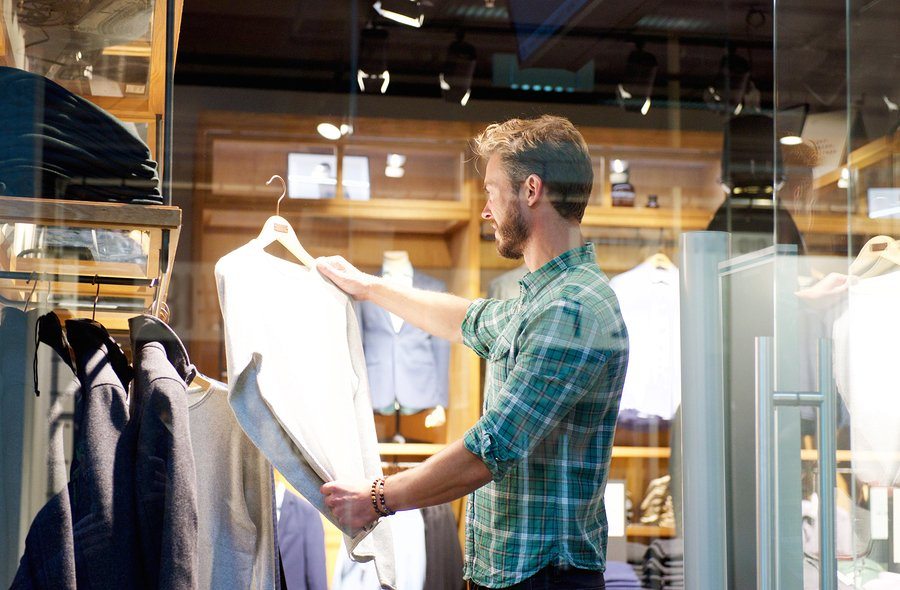Mobile
Mobile Marketing: Moving From M‑Commerce to In‑Store Engagement
July 7, 2016

The term “mobile marketing” registers differently for consumers, retailers and brands. For consumers, the phrase is synonymous with delivering almost-instant gratification while shopping online or via mobile app, usually from the comfort of their own home. Online shopping has successfully raised revenue and brand awareness for companies; however, it has also consequently caused consumers to think differently when on the path-to-purchase. Ecommerce websites like Amazon present all necessary information to make a buying decision on one screen in an easily accessible form. Additionally, the websites often provide quick delivery processes, anywhere between a few hours to a few days, significantly reducing customers’ wait time for their precious items.
The Proliferation of the Mobile Shopper
While ecommerce is necessary for companies without a physical store front, retailers that utilize both spaces, or solely focus on brick-and-mortar, have seen a decrease in foot traffic. In fact, during the 2019 holiday season, brick-and-mortar foot traffic was down 6.1% in the U.S. and 5% in Canada, according to ShopperTrak. Using email and mobile marketing to promote special in-store deals can mend this separation. However, it is imperative engagement does not stop once customers walk through the door but, continues through the entire path-to-purchase in order to increase the buying potential.
As dependency upon mobile devices continues to explode, it also presents an advantage for physical locations by providing customer insight directly from their personal devices. The more knowledge retailers have about what drives people’s in-store traffic patterns and consumer buying decisions, the more brands and retailers can deliver strategic and tailored promotions and campaigns in real-time.
Data-driven marketing campaigns are proving to not only create a better experience for the consumer, but a higher conversion rate with a more profitable deployment and spend of advertising dollars for retailer and brands. According to Forbes Insights and Turn, companies implementing marketing efforts backed by customer insights found an increase in sales by 55% and customer loyalty by 74%. The challenge is, by and large, most shoppers are not directly connecting with the retailer, beyond making purchases at the store. Therefore, the real opportunity in mobile marketing is to engage the consumers the moment they walk through the front door and begin building a loyal shopper base.
What to Consider with Mobile Marketing
A great way to develop and maintain loyal mobile shoppers is by delivering location-based and highly tailored information, such as product details, reviews, recommendations, special offers and coupons to consumers’ smartphones as they walk the aisles. This type of strategic tactic allows brands to transform themselves into a personalized shopping concierge, assisting with purchasing decisions all in real-time.
A recommended starting place for retailers interested in utilizing mobile engagement is through the use of text codes. This process begins when a shopper enters a store and is alerted to signage instructing them to simply text a code to receive a discounted item. At that point, they have the opportunity to “opt in” to a relationship with the retailer or, continue on their way. User participation results are collected, giving retailers valuable insight into what deals, promotions and campaigns shoppers are interested, or uninterested in, resulting in a more thorough understanding of purchasing behaviors. Once a connection has been established, retailers have the capability to, both geographically and circumstantially, deliver relevant content throughout the shopper’s journey in-store.
When developing a mobile engagement program, retailers should understand that there’s a fine line between pushing relevant content when consumers ask for it, and delivering information and incentives that have no benefit. Take geo-targeting, an extremely useful technique that delivers content to a user based on his or her geographic location. While it is a highly effective and proven tool used by countless retailers, without the proper parameters in place, it can potentially become overreaching and repel bombarded consumers away from the brand. Retailers with good intentions can appear aggressive and intrusive as they unintentionally deliver irrelevant information or invade the consumers’ right to privacy.
Retailers wanting to have successful mobile marketing initiatives should recognize mobile devices are personal and are an extension of the human psyche today. Techniques that are far too aggressive are not going to be welcomed and well-received by consumers. However, there are many brands and retailers successfully balancing this line.
Executing a Successful Engagement Program
Starbucks is a prime example of a brand leveraging a sophisticated technology platform to connect and deliver to its millions of loyal customers without overreaching. The adoption rate of its branded app is extremely high due to the frequency of store visits, the ability to pay via the app and the value proposition for consumers to participate.
While the coffee giant can communicate with their consumers directly at all times through the app, retailers are coming to the realization that consumers do not want to have a mobile app for every store they shop. Nielsen reports the average consumer uses 26 apps a month. This includes social media, entertainment and communication apps, and therefore, leaves only a handful of space for retail-specific apps.
The most elegant solution (and most beneficial to consumers) is either an app-less experience or a universal app that results in increased per-visitor sales, higher store traffic, more engaged shoppers and ultimately greater profitability. App-less solutions drive consumers to branded mobile microsites, allowing retailers to provide highly-targeted information at the request of each shopper every time they visit the store.
On the other hand, a universal app solution provides consumers with a single mobile-centric source for information from all participating retailers. Through the app, brands and retailers serve as an all-in-one resource – thus making the shopping experience more positive, engaging and unique to each visitor that walks through the door.
Gone are the days when mobile marketing simply meant delivering mobile-friendly ads and offering consumers a way to shop online via their mobile devices. Now, in order to thrive in a technology-driven society, retailers must create a robust mobile marketing campaign that not only engages shoppers online, but also in-store through the entire journey from door to checkout.
Andrew Levi is Founder and CEO of Blue Calypso.![]()
The State of Brand Loyalty in the U.S. in 2023
Related



